[Columbines: The Genus Aquilegia East of the Cascade
Mountains of Oregon and Washington]
Red Columbine, Sitka Columbine, Western Columbine
Aquilegia formosa
Synonyms: Aquilegia canadensis var. formosa, Aquilegia columbiana, Aquilegia formosa var. communis, Aquilegia formosa var. formosa, Aquilegia formosa var. megalantha, Aquilegia formosa var. truncata, Aquilegia formosa var. wawawensis
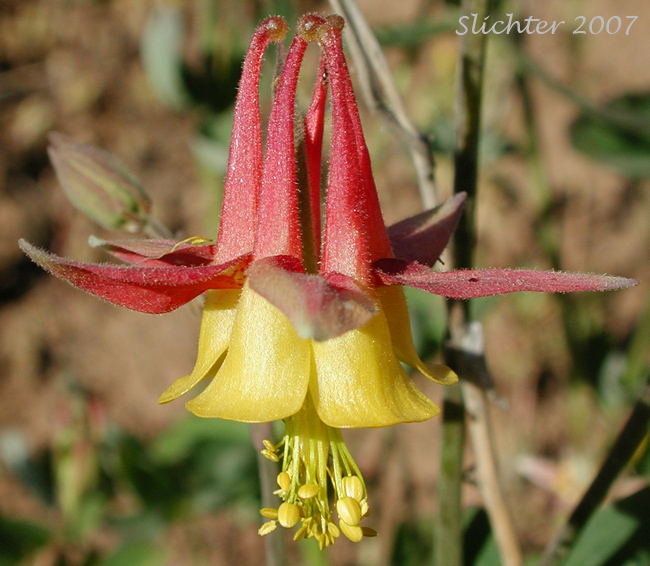
The photo above shows red columbine as photographed along Hat Point Road below Horse Creek Viewpoint in Hells Canyon National Recreation Area of northeastern Oregon..........July 11, 2007.Note the 5 sepals reflexed upwards from the pendant flower, with the 5 spurred petals which are tipped with yellow. This plant was found amongst quite a few yellow columbine at this site.
 The photo at right
shows a close-up of a leaf of red columbine as seen at Blue Sky, Hart Mt. National
Antelope Refuge.........June 25, 2003.
The photo at right
shows a close-up of a leaf of red columbine as seen at Blue Sky, Hart Mt. National
Antelope Refuge.........June 25, 2003.
Characteristics:
Red columbine is one of the more distinctive and attractive
wildflowers to be viewed in the Pacific Northwest. Several erect stems arise
from 15-100 cm high. The stems are largely leafless, although an occasional
reduced leaf may be found on the stem. The basal leaves
are divided into multiples of three leaflets. These smaller leaflets are further
lobed. Any stem leaves that are present are alternate and smaller representatives
of the basal leaves. The upper leaf surfaces are glaucous (bluish-green) while
the undersides are typically pubescent.
The flowers are irregularly shaped, with five red sepals flared
to the sides, and five smaller yellow petals extending below the petals. The
blade of the petal (below the sepals) measures approximately 2-5 mm long. The
petals also consist of a long red, conical, nectar-producing spur which extends
straight above the sepals. The stamens typically dangle below the petals. The
whole flower tends to nod downward, with the spurs pointing upwards.
In the garden, red columbine is a long-lived perennial wildflower
which reseeds fairly easily. It is an early spring bloomer, and may attract
hummingbirds during their northerly spring migration.
Habitat:
Red columbine is found from moist, open forests of the lowlands,
to subalpine meadows.
Range
The red columbine is widely distributed throughout the Pacific
Northwest, but in the arid regions, tends to be limited to near streams or mid
to upper elevation meadows.
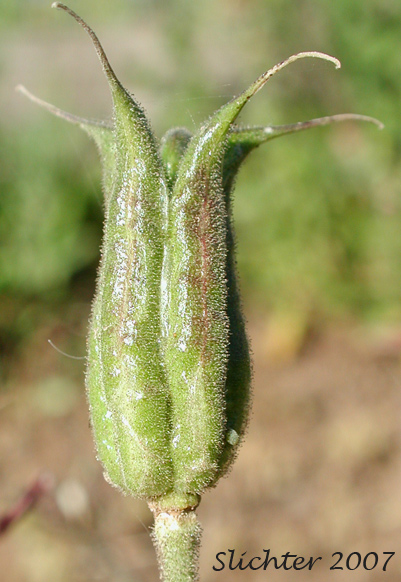
The photo above shows the follicle of red columbine as seen along Hat Pt. Road below Horse Creek Viewpoint in Hells Canyon National Recreation Area.........July 11, 2007. Note the numerous short gland-tipped hairs covering the follicle.
 -
- 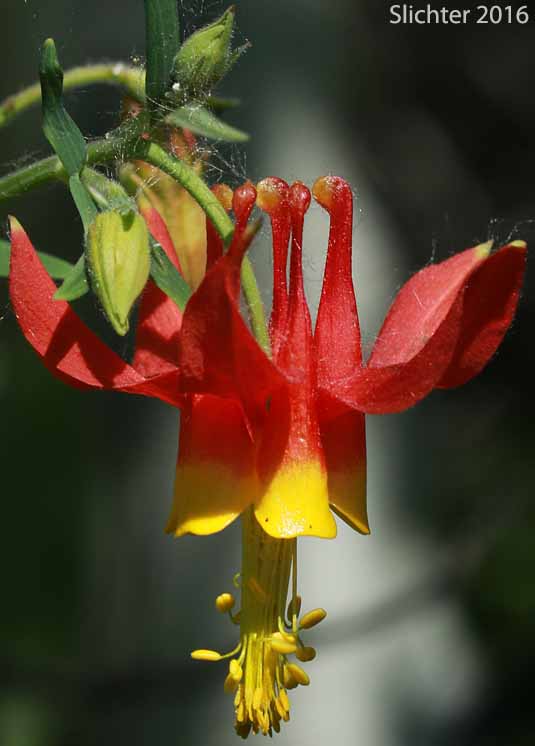
Close-up of the flower (left) of red columbine as seen near Little Pine Creek along the Canyon Mountain Trail #218, Strawberry Mountain Wilderness...........August 19, 2011. The photo at right shows the flower of red columbine as seen next to Bond Creek several hundred meters upstream along Bond Creek from Hot Springs Campground, Hart Mt. National Antelope Refuge........June 11, 2016
 -
- 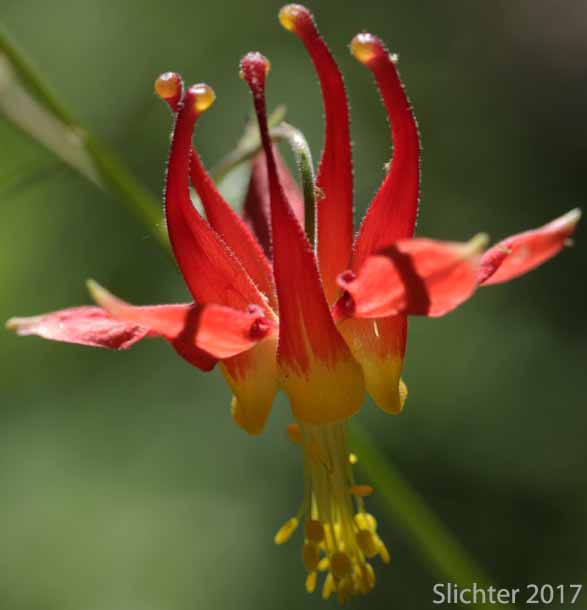
Flower of red columbine as seen (left) along FS Road #38-200 about 2 miles southeast of Spanish Peak, Ochoco National Forest..........June 14, 2015. The photo at right shows red columbine blooming along the Ochoco Mountain Trail #823 along upper Rock Creek, Ochoco National Forest.........July 12, 2017.
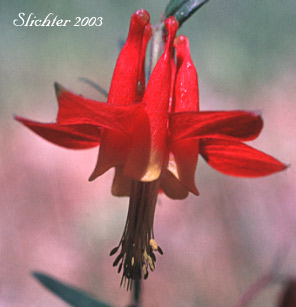 -
- 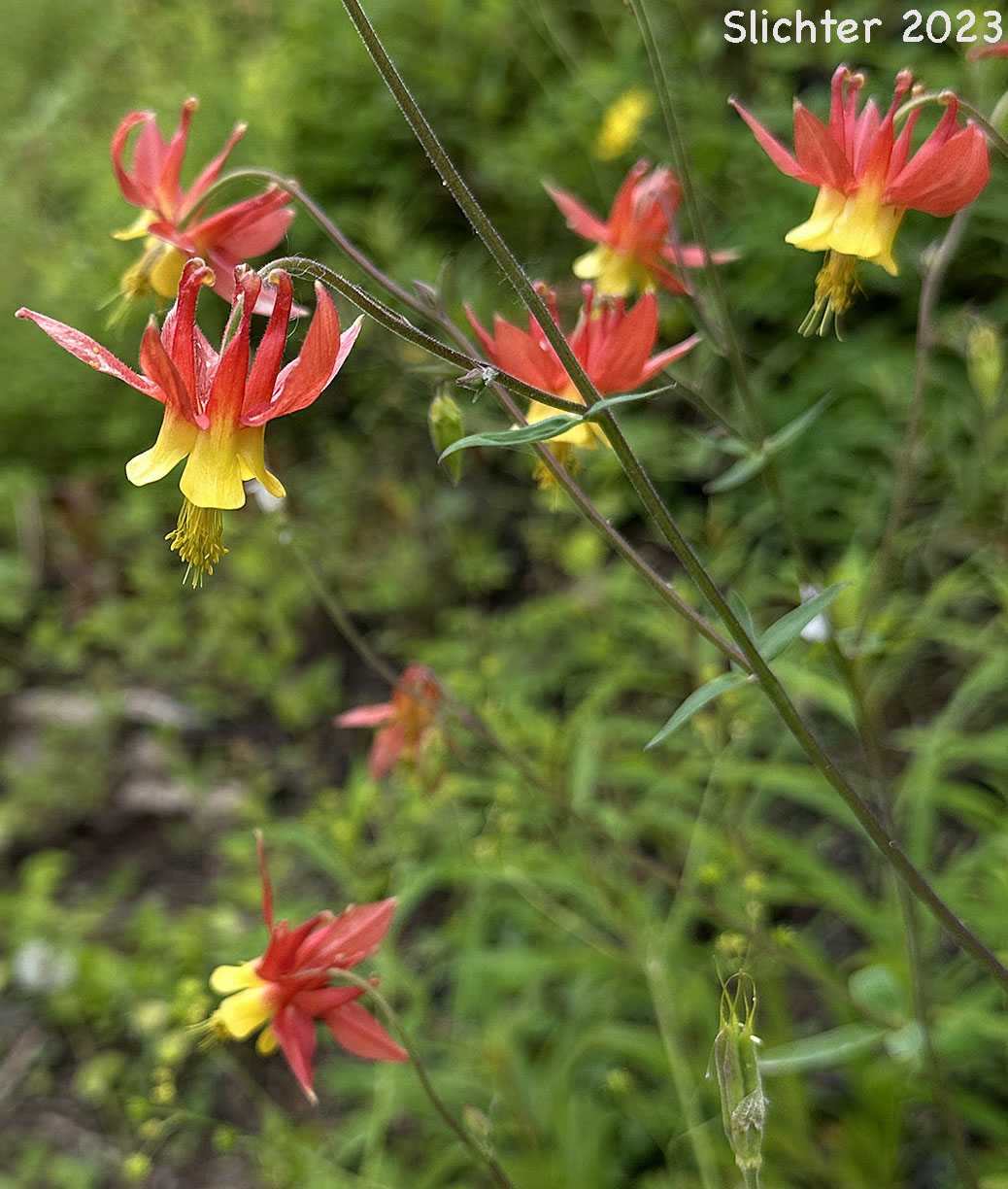
The photo at left shows a close-up of the flower of red columbine as seen at Blue Sky, Hart Mt. National Antelope Refuge........June 25, 2003. The photo at right shows the inflorescence of of red columbine as seen in woodlands near the locked gate on spur road 160, about one-quarter of a mile uphill from the junction with Forest Road 41, Umatilla National Forest......June 17, 2023.
Paul Slichter
 The photo at right
shows a close-up of a leaf of red columbine as seen at Blue Sky, Hart Mt. National
Antelope Refuge.........June 25, 2003.
The photo at right
shows a close-up of a leaf of red columbine as seen at Blue Sky, Hart Mt. National
Antelope Refuge.........June 25, 2003.